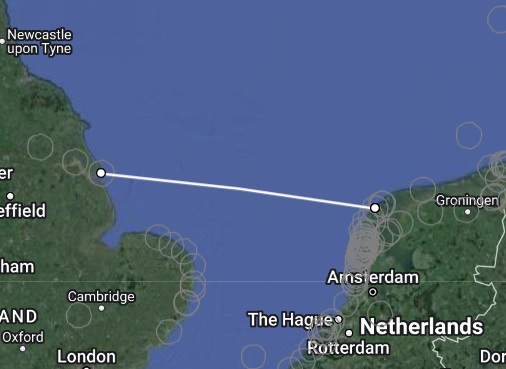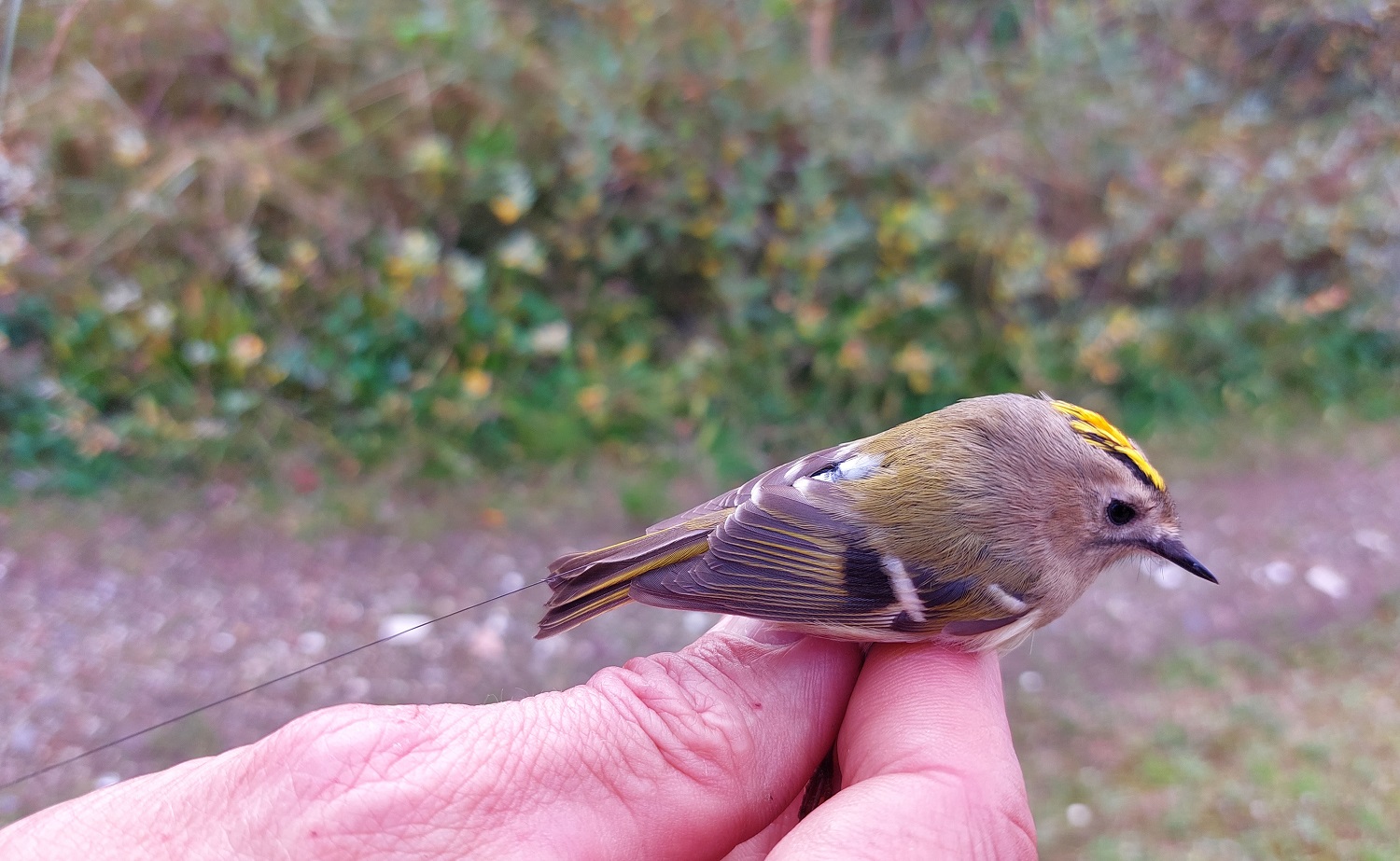Goldcrests are the smallest birds in Europe, but that doesn’t stop them achieving top performances. One such performance was recorded for the first time by a WUR transmitter on a bird’s back. On 19 to 20 October, the bird in question flew across the North Sea from Vlieland to Spurn (East Yorkshire) in less than eight hours. To be sure, it had a strong tailwind.
‘You need that,’ says ecologist Sander Lagerveld (Wageningen Marine Research). ‘Otherwise it would probably not make the crossing.’ The birds time the crossing carefully to make use of favourable wind conditions and dry weather. The goldcrest was fitted with a transmitter earlier that day in Lagerveld’s presence. ‘We hoped it would leave that day given the strong easterly to south-easterly winds.’
Wind turbines
This was part of a pilot in which transmitters are fitted to goldcrests, skylarks and starlings and they are monitored. The project, commissioned by the Ministry of Agriculture, is in partnership with the bird ringing centres of Castricum and Vlieland and is part of the ‘Development of Instruments for a Nature-inclusive Energy Transition’ programme. Birds and bats fall victim to wind turbines, but it may be possible to prevent this.
The pilot with goldcrests is about preventing wind turbine casualties
The goldcrest with ID 42517 was spared this fate. It flew (or was blown) over the sea in a straight line from Vlieland. The signal from its 0.16 gram transmitter was picked up on the east coast of England, near Hull, by the Motus Wildlife Tracking System of the Spurn Bird Observatory. Dozens of such receivers are to be found on either side of the North Sea.

Flight peaks
Lagerveld has been studying migrating birds and bats in relation to wind farms for years. He has a mountain of data on the migration of the Nathusius’ pipistrelle, for example. The pilot with the goldcrest could lead to a larger programme aimed at preventing casualties due to wind farms. Wind turbines could for example be stopped during peaks in bird migration. To do that, detailed information is needed per species on their flight movements.
It is not known how the speedy little goldcrest (a male) is doing now. The transmitter stays attached for about a month, so it will have fallen off by now. The goldcrest’s flight is probably a speed record. According to Lagerveld, this is the first time goldcrests have been fitted with transmitters. So this is a first at any rate.

 Photo Sander Lagerveld
Photo Sander Lagerveld 

